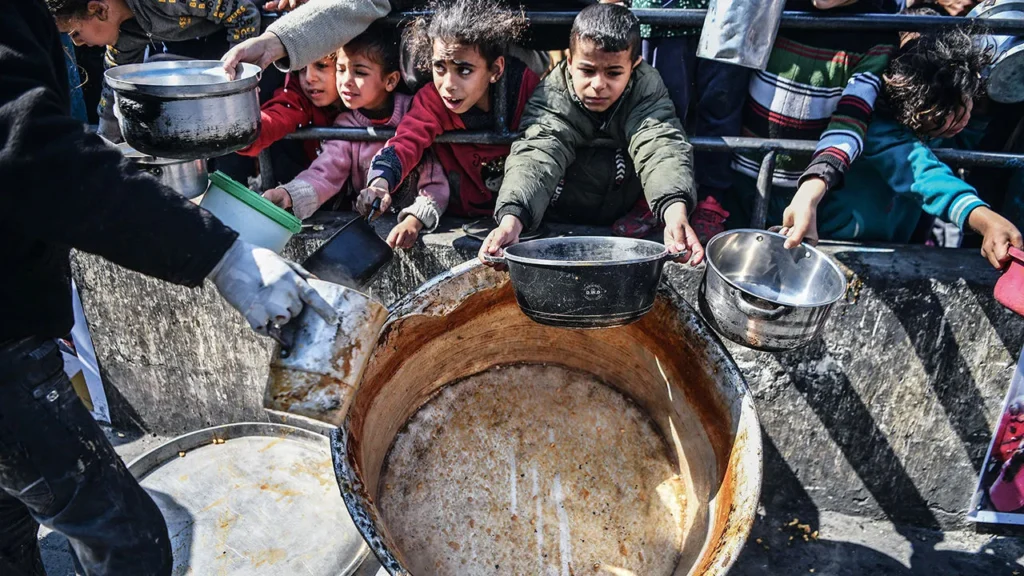A new global hunger report warns that the entire population of Gaza is facing a critical risk of famine, with nearly 500,000 people teetering on the edge of starvation. This marks a severe worsening of the humanitarian situation since the last analysis in October, according to the Integrated Food Security Phase Classification (IPC).
The IPC’s latest assessment, covering April 1 to May 10 and projecting conditions through the end of September, highlights the escalating food crisis caused by Israel’s blockade of the Gaza Strip. The blockade intensified after Israel resumed its military offensive against Hamas in early March, following a breakdown in the ceasefire agreement that had previously allowed aid trucks into the region.
Currently, 1.95 million people — approximately 93% of Gaza’s population — are suffering from acute food insecurity. Of these, 244,000 are enduring “catastrophic” conditions, the most severe level of hunger. This figure is nearly double the 133,000 recorded in October. The IPC now forecasts that by September’s end, about 470,000 people (22% of the population) could be facing catastrophic hunger, with over one million others at emergency levels.
The IPC report calls for immediate international action to prevent a full-scale famine, warning that failure to intervene will lead to further starvation and loss of life.
Despite these findings, Israeli authorities claim that Gaza is not in a hunger crisis and that sufficient aid has entered to support the population. They argue that measures are in place to prevent aid from falling into the hands of Hamas.
However, the IPC notes that a newly announced Israeli aid plan from May 5 is unlikely to meet Gaza’s urgent needs. The proposed distribution methods, the IPC says, will likely create substantial access barriers for many residents.
The IPC’s analyses are developed in collaboration with United Nations agencies and humanitarian organizations.

